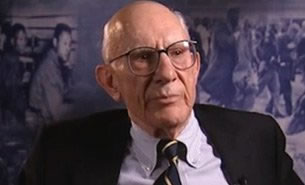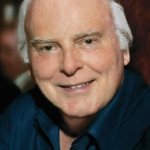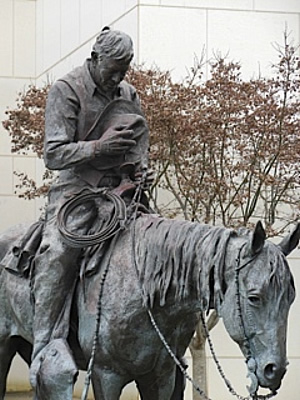 OUR POPULATION: Here’s a map that gives you an idea where people live in Georgia. The darker shades of green show the most populous counties, with only Columbus, Augusta, Macon and Chatham areas having more than 250,000 population—outside the Metro Atlanta counties. But look at the yellow counties…..the least populous, and how they are the majority of Georgia’s counties. You know the largest county (Fulton), but what is the smallest of Georgia’s counties? With 1,717 people in 2010, that will be Taliaferro County, along Interstate 20 toward Augusta.
OUR POPULATION: Here’s a map that gives you an idea where people live in Georgia. The darker shades of green show the most populous counties, with only Columbus, Augusta, Macon and Chatham areas having more than 250,000 population—outside the Metro Atlanta counties. But look at the yellow counties…..the least populous, and how they are the majority of Georgia’s counties. You know the largest county (Fulton), but what is the smallest of Georgia’s counties? With 1,717 people in 2010, that will be Taliaferro County, along Interstate 20 toward Augusta.
Issue 14.100 | March 24, 2015
IN THIS EDITION
TODAY’S FOCUS: Colleagues Remember Veteran Newspaperman Claude Sitton
EEB PERSPECTIVE: More Reasons Georgia’s Legislature Should Meet Every Two Years
FEEDBACK: Commuter Rail, Animal Abuse and Reflections on Hillary Clinton
UPCOMING: Two PCOM Students Find Common Ground; Stuart Woods To Appear Soon
NOTABLE: Students Win DAR Writing Contest; Reed Joins PCOM Staff
RECOMMENDED READ: A White Man’s Woman by Malvin Williams-Tyson
GEORGIA TIDBIT: Architect Thornton Marye Raises Many Notable Atlanta Buildings
TODAY’S QUOTE: Reflections on Springtime from Lewis Grizzard
MYSTERY PHOTO: Only One Person Recognized Astoria, Oregon
LAGNIAPPE: Wayward Bird Spotted in Rhodes Jordan Park
TODAY’S FOCUS
Remembering newspaperman Claude Sitton of Conyers
(Editor’s Note: A legendary journalist died in Conyers, Ga., recently. Here is one reflection on his life work. On a personal note, the deceased represented the AP Managing Editor’s Association on the Accrediting Commission for Education in Journalism and Mass Communications for years, during much of 15 years when I was the Southern Newspaper Publishers Association representative on the same commission. We shared cab rides to airports often, after losing battles in the Commission, often by lop-sided votes, with us in agreement.—eeb)
By Edward VanHorn
Executive director, Southern Newspaper Publishers Association
ATLANTA, Ga., March 24, 2015 — Long before Woodward and Bernstein inspired a generation of Baby Boomers to become journalists, Claude Sitton was setting the gold standard for journalism.
Sitton covered the civil rights movement for The New York Times from 1958 to 1964 and served as national editor of The Times until 1968. He died in Atlanta on March 10. He was 89.
Sitton left The Times in 1968, shortly after the assassination of Martin Luther King Jr., to become editor of The News & Observer in Raleigh, N.C. — a job he held until he retired in 1990.
Dennis Hevesi, writing in The New York Times, called Sitton “an eyewitness to one of the most wrenching but consequential episodes in American history.”
Jay Price, at The News & Observer, wrote: “Sitton’s direct, evocative and sometimes harrowing stories were a pipeline of truth from the front lines of the civil rights movement to the kitchen tables and living rooms of the rest of the nation.”
Sitton’s commentary at The News & Observer won a Pulitzer Prize in 1983, and his journalistic achievements were recognized with a George Polk Career Award in 1991 and John Chancellor Award in 2000.
The News & Observer describes Sitton as a “forceful editor” whose tenure was “marked by his aggressive direction of reporting and his determination to hold accountable those he thought were not acting in the public good.”
That may be an understatement. He was often relentless.
He pushed journalists to interpret change: “Mere reporting of isolated events is not enough.”
He was unapologetic about his strong positions: “Popularity is not a legitimate goal of a newspaper.”
And he was a strong advocate for public education reform, and education standards for journalists.
In a 1984 speech to newspaper executives at the University of Georgia, Sitton said: “Many of the reporters, editors and publishers who will replace us are still in school. The evidence indicates strongly that they are not receiving the preparation they must have if they’re to do our jobs and do them well. If that is so, the future of newspapers as the only accurate, comprehensive and thoughtfully informative journal of daily events is in jeopardy.”
Sitton voiced concern that future journalists would lack the skills to gather information with perception and put it in perspective for readers.
“As you know only too well,” he said, “that is television’s game, not ours.”
While he was in Raleigh, Sitton led dozens of SNPA Foundation programs for writers and editors, and campaigned with SNPA to fortify journalism school accreditation standards that required students to have firm foundations of knowledge in liberal arts, sciences and social sciences – as well as skills in writing and editing and technology.
From 1991-1994, Sitton taught journalism at his alma mater, Emory University. Suzanne Morrissey, his student at Emory and now the editor of the alumni magazine at the College of the Holy Cross in Massachusetts, called Sutton “a journalism god.”
“You knew it was a privilege to be learning from him. It was a gift to be in his presence,” Morrissey said.
“When someone who had that much influence on you passes, it really brings back to mind the reason you went into this business in the first place and how much they inspired you.”
The journalism profession needs many more torch bearers like Claude Sitton – but in so many ways, he was a singular force.
- View a 2002 Newseum interview with Sitton, talking about Freedom Summer in 1964 and the lies and cover-up involving the murders of three civil rights workers in Mississippi. Go to http://www.newseum.org/2015/03/10/remembering-claude-sitton/
EEB PERSPECTIVE
More reasons for the state legislature to meet once every two years
By Elliott Brack, editor and publisher, GwinnettForum.com
MARCH 24, 2015 — Some readers have wondered if we were serious about one of GwinnettForum’s Continuing Objectives, to require that the Georgia General Assembly meet only once in every two years.

In short, you betcha! Why? Because most Georgians will tell you that nothing is safe when the Georgia Legislature meets, as members introduce all sorts of measures that negatively impacts its citizens, most bills only benefiting some local constituent.
Major case in point: while the state government seeks cuts in school budgets (read as taking away bus driver’s health insurance, while raising the salary of judges), they dance around a billion dollar sales tax rebate for Delta Air Lines. Meanwhile, that major Georgia corporation is taking in many millions of dollars in higher profits.
Are you beginning to get the idea of why we need to limit the Legislature meeting?
A recent effort of the Legislature has been to make more inroads by the state in taking over the rights of local governments. Once simply called “unfunded mandates,” as the Legislature required cities, counties and school boards to pay for items previously done by the state, these days we find many areas where local control is simply being eroded by the Legislature.
 For instance, no longer can local government regulate guns in local taverns. Now it’s done by the state. A bill this year would have limited local control of banning specific breeds of dogs. The Legislature wants the state to do it. And other bills are aimed at local governments having no control of plastic bags, moving monuments or statues, regulating public swimming pools, or keeping contractors from cutting utility lines.
For instance, no longer can local government regulate guns in local taverns. Now it’s done by the state. A bill this year would have limited local control of banning specific breeds of dogs. The Legislature wants the state to do it. And other bills are aimed at local governments having no control of plastic bags, moving monuments or statues, regulating public swimming pools, or keeping contractors from cutting utility lines.
Whatever happened to the notion that local elected officials were in a better position to make local decisions than state officials? Isn’t the government closest to the people the best government? Isn’t the idea by Republican-controlled Legislature for less government, not more state regulations?
But local control is just one place where state government is exerting more influence than it should.
We say again, keep the legislature from meeting as often, and you have improved (and far less) state government. If nothing else, if we can limit even the time the Legislature convenes to once every two years, we have improved our chances of finding whacky legislation being presented, and we will have done a good job.
An example of whacky legislation: we go no farther than a bill introduced by one of the Gwinnett delegation, Rep. Tom Kirby (R) of Loganville. Simply put, he wants to ban mermaids, centaurs, werewolves and other half-human, half-animal creatures that don’t exist. Can you believe that? Now that’s a worthy of piece of legislation, isn’t it?
Man o man! Let’s hope Rep. Kirby loses next time around, along with many of his unopposed colleagues. We deserve better. If you know of a decent and reasonable person wanting to run for the Legislature, please encourage them. We need good, sound people seeking office. If not, people like Tom Kirby will merely back into office by getting re-elected. Remember, perhaps two-third of the Legislators don’t have opposition. How can we improve matters if we keep sending the same yokels down to represent us?
Potential legislative candidates of Georgia: arise. We need you to get on the ballots to change matters at the state capitol. You could introduce legislation to meet only once every two years. At the least, it couldn’t hurt. Meeting only once very two years would reduce the chances of unreasonable legislation (good or bad) being proposed. We’ve had enough to last a long, long time.
IN THE SPOTLIGHT
Brand Banking Company
 The public spiritedness of our sponsors allows us to bring GwinnettForum to you at no cost to readers. Today’s sponsor is Brand Banking Company, headquartered in Lawrenceville, where it has three offices, with additional branches in Snellville, Grayson and Flowery Branch. It is the largest privately held bank in Gwinnett, with assets of $1,920,000,000. The bank’s main office is in Lawrenceville on the Historic Courthouse Square, plus there is another branch on Hurricane Shoals Road. Other locations are in Grayson, Snellville, Flowery Branch, Buford, Duluth and Buckhead. Member, FDIC and Federal Reserve System.
The public spiritedness of our sponsors allows us to bring GwinnettForum to you at no cost to readers. Today’s sponsor is Brand Banking Company, headquartered in Lawrenceville, where it has three offices, with additional branches in Snellville, Grayson and Flowery Branch. It is the largest privately held bank in Gwinnett, with assets of $1,920,000,000. The bank’s main office is in Lawrenceville on the Historic Courthouse Square, plus there is another branch on Hurricane Shoals Road. Other locations are in Grayson, Snellville, Flowery Branch, Buford, Duluth and Buckhead. Member, FDIC and Federal Reserve System.
- For more information, go to https://www.thebrandbank.com/home/home.
- For a list of other sponsors of this forum, go to: https://www.gwinnettforum.com/about/sponsors.
FEEDBACK
Feels use of commuter rail would help metro Atlanta the best
Editor, the Forum:
 A recent item about rail service in GwinnettForum got my attention. The three rail systems used in mass transit are:
A recent item about rail service in GwinnettForum got my attention. The three rail systems used in mass transit are:
- Light Rail – This is basically the street railway (streetcar) of the late 19th and early 20th centuries and is enjoying a comeback of sorts. It is best for shorter trips as it generally stops every block or so, making it difficult to cover much distance quickly.
- Heavy Rail – This consists of subways and – in a few places – elevated trains. They don’t stop as often, go faster as a result, and can be effectively used to cover distances of several miles. MARTA’s subways are an example of heavy rail.
- Commuter Rail – This consists of locomotive-hauled trains on conventional railroads, using the tracks of freight carriers (for which they are, of course, compensated.) This is best for covering distances of up to 30 miles or more. New York, Chicago, San Francisco, Northern Virginia, Nashville, South Florida, and the Dallas-Fort Worth area (among others) have commuter rail services.
Metro-Atlanta needs commuter rail more than any other type of transportation. It is capable of handling large numbers of people with relatively little additional infrastructure investment. It wouldn’t be cheap, but at least there would be no expense for purchasing right of way, initial construction, etc. Modifications would probably have to be made in track layout and signaling systems, and, of course, the owning railroads would need to be compensated.
MARTA is good, but it really doesn’t address the need to move people from the far-flung suburbs (and Atlanta is the poster-child for urban sprawl.) The streetcar service that was recently opened is, in my opinion, little more than a tourist attraction as it does nothing to reduce traffic on the interstates – and that is Atlanta’s real problem.
More highways? Surely you jest! The DOT has been trying to pave its way out of a traffic problem for about 60 years, now. Has it worked? Just look around you on I-85 during rush hour, and you’d have to agree that it has not.
— Robert Hanson, Loganville
Animal abuse is a criminal offense, whatever the pet
Editor, the Forum:
Animal abuse is a criminal offense, whether the animal is a dog, cat or hamster, and leaving one without food or water, whether inside or out, is abuse that should be punished. Harshly.
Sweeping laws that affect everyone shouldn’t be written, in my judgment, to address the abuses of a few. We have a fenced in yard for our dogs, but many don’t, and many subdivisions have homeowner rules against fences. Rules that are comfortable for some dogs and dog owners are more problematic for others.
Large dogs and many breeds need exercise that simply isn’t available indoors. Using the dog park is fine, and we go there frequently with our dogs, but for many working parents that can be a challenge. While tying a dog on a short lead with no shelter or shade can be abusive, especially without water, a longer lead or a trolley system with water available is not.
I’d urge everyone to consider that most pet owners love their animals like their children, and want what is best for them, while there are a few who buy dogs and don’t care for them. Most neighborhoods have many of the former and maybe one of the latter. Please don’t let the latter make life difficult for the former, or deny our dogs the outside time they need and enjoy.
Consider too that many rescued dogs can take time to adjust to a more loving environment and may be problematic under any circumstances for a while. We have such a dog who took a few months to adapt. Please give them some time. Their alternative was the kill shelter.
— Jerry Hossom, Peachtree Corners
Feels recent comment about Hillary Clinton was pure fiction
Editor, the Forum:
No wonder some people have trouble knowing the real Hillary Clinton. With fiction like that of Debra Houston’s piece in the last edition, one might have difficulty in recognizing their own mother. By using her own e-mail account Secretary of State Clinton broke no laws, contrary to the loose use of words by Houston.
And because she did utilize her “personal” account, her decision to erase thousands of “personal” messages, hardly rises to the level of President Nixon’s infamous tape erasures. What part of “personal” does Houston not get? Mrs. Clinton might well fall off the world stage — especially with fiction writers like Houston chopping off her legs with reports that are contrary to the known facts.
— Derby Waters, Jesup
Rant. Rave. Send your opinion: Our policy: We encourage readers to submit feedback (or letters to the editor). Send your thoughts to the editor at elliott@brack.net. We will edit for length and clarity. Make sure to include your name and the city where you live. Submission of a comment grants permission for us to reprint. Please keep your comments to 300 words or less. However, we will consider longer articles (no more than 500 words) for featuring in Today’s Issue as space allows.
UPCOMING
Two GA-PCOM students share classroom … and now marriage
Similar to a professional draft, two medical programs determine where fourth-year medical students will spend their next three or four years learning skills in specialties. These are the American Osteopathic Association Intern/Resident Registration Program and the National Resident Match Program. Two students at the Georgia Campus of the Philadelphia College of Osteopathic Medicine (GA-PCOM), however, found a “match” much earlier—-at registration. Eventually, this led to their marriage.
Will Hardeman, originally from Spring Hill, Tenn., obtained a bachelor’s degree in molecular biology at Lipscomb University and a master’s degree in public health from the University of South Florida. He left a research position at Vanderbilt University to attend medical school at GA-PCOM. He wrote in a blog post: “I was content with a life completely devoted to my career as a physician.”
Nicole (Hoag) Hardeman, from Bogart, Ga., completed a bachelor’s degree in biological engineering from the University of Georgia. She was focused on adjusting to life as a medical student at GA-PCOM. She remembers that the two of them first met while waiting in line to receive school ID badges.
They started visiting each other’s groups during anatomy lab and soon realized they were meant for each other. Will proposed to Nicole in March, 2014 surrounded by Nicole’s relatives, many of whom had secretly come into town for the proposal.
They married in the summer of 2014 (their only summer off during medical school). They tied the knot on July 12 and made their home in Lawrenceville. At the start of this coming summer, they will move to Rome, Georgia for clinical rotations.
“It has been quite the adventure being married to another medical student,” the two express on their shared blog, “Though we don’t share the same study habits, we are both really invested in finding ways to support each other and hold each other accountable to becoming better students, and future physicians.”
Woods to return to Gwinnett at Hamilton Mill Library April 10
New York Times bestselling author Stuart Woods will return to Gwinnett for a book discussion and signing for Hot Pursuit on April 10 at 7 p.m. at the Hamilton Mill branch library.
Hot Pursuit features the return of Stone Barrington in a new and exciting adventure. Stuart is a Georgia native who graduated from the University of Georgia and has published over 30 books. The program is free and open to the public. Books will be available for purchase and signing.
The Hamilton Mill branch library is located at 3690 Braselton Highway, Dacula.
NOTABLE
Four Gwinnett students win DAR essay contests
Four Gwinnett students have won an essay contest sponsored by the Philadelphia Winn Chapter of the National Society Daughters of the American Revolution.
The 2014-2015 American History Essay Contest was open to students in grades 5, 6, 7, and 8 in a public, private, or parochial school, or those who are home schooled. The topic title was “A Child’s Journey Through Ellis Island.”
Christian Kim, a seventh grader from Parkview Christian School in Lilburn, submitted his winning essay. Christian tells of his excitement when his character first spots land and sees the statue of a lady holding a torch and a book. A wave of emotion washes over him as his face is soaked with tears. Christian is the son of Mr. and Mrs. Lloyd Kim.
Grace Koh, daughter of Mr. and Mrs. Grant Koh of Suwanee, is the chapter winner of the Good Citizen Award. She is a high school student at North Gwinnett. Grace’s essay emphasized dependability, service, leadership and patriotism. She won for her essay entitled “Our American Heritage and Our Responsibility for Preserving It.”
Karsen Lindo is a fifth grader at Duncan Creek Elementary School in Hoschton. Karsen tells of the rigorous tests after arriving at Ellis Island to determine who was fit to stay or who would be sent back to their country of origin. He is the son of Mr. and Mrs. Howard Lindo.
Ben Shaver, an eighth grader from Parkview Christian School in Lilburn, was also a winner with his essay. Ben writes about the magnificent beauty of the Statue of Liberty upon seeing it for the first time as well as presenting a different outcome for his character. He is the son of Mr. and Mrs. Danny Shaver. Ben’s paternal grandmother, Frances Shaver, a DAR member from Montgomery, Ala. was in attendance.
T. J. Miniscalco, who teaches at Shiloh High School in Snellville, was honored as a chapter’s Outstanding Teacher of American History.
Reed joins GA-PCOM as web content specialist
Kristi Reed has joined the Georgia Campus of the Philadelphia College of Osteopathic Medicine (GA-PCOM) as a web content specialist. Reed is part of a new web team, located in Suwanee and Philadelphia, tasked with redesign, content development and management of the college’s website. Originally from Gadsden, Ala., Reed earned a bachelor’s degree in management from the University of Illinois at Springfield. Reed currently lives in Dacula. She has worked for the Gwinnett Daily Post, Main Street Newspapers, NGwinnett.com and Patch.com.
RECOMMENDED READ
A White Man’s Woman, by Malvin Williams-Tyson
 This book for me is a shocking history lesson, but entertaining book. As I read it, I always was anticipating what would happen in the next chapter. This story takes place during the Jim Crow laws. It is about one black woman’s experiences, at an early age, with life situations. She (Georgie Mae) does her best living her life while protecting her kids and the man she loves. She continues to be tortured by white man with rape, but protects her kids from being hurt and her family from being killed, but still gains strength in Jesus Christ. The book’s descriptions are most graphic and lays out, in detail, criminal acts. The brutality that happens to Georgie Mae is very real and happens today to others. Read this book and you’ll understand the torture and the strength of Georgie Mae continually being attacked and having two mixed race kids.
This book for me is a shocking history lesson, but entertaining book. As I read it, I always was anticipating what would happen in the next chapter. This story takes place during the Jim Crow laws. It is about one black woman’s experiences, at an early age, with life situations. She (Georgie Mae) does her best living her life while protecting her kids and the man she loves. She continues to be tortured by white man with rape, but protects her kids from being hurt and her family from being killed, but still gains strength in Jesus Christ. The book’s descriptions are most graphic and lays out, in detail, criminal acts. The brutality that happens to Georgie Mae is very real and happens today to others. Read this book and you’ll understand the torture and the strength of Georgie Mae continually being attacked and having two mixed race kids.
— Derek Peacock, Norcross
An invitation: What books, restaurants, movies or web sites have you enjoyed recently? Send us your recent selection, along with a short paragraph (100 words) as to why you liked this, plus what you plan to visit or read next. — eeb
GEORGIA ENCYCLOPEDIA TIDBIT
Architect Marye raises many notable Atlanta buildings
Architect and preservationist P. Thornton Marye built many notable domestic, commercial, and civic buildings in Atlanta during the early 20th century, including the Fox Theatre.
Philip Thornton Marye was born in 1872 in Alexandria, Va., and raised at Brompton, the family mansion built in 1836 by John Lawrence Marye. (The mansion was later home to the dean of Mary Washington College in Fredericksburg, Va.) He studied from 1888 to 1889 at Randolph-Macon College, and from 1889 to 1890 at the University of Virginia. During the Spanish-American War (1898), Marye served in Cuba and was a member of the Fourth Virginia Volunteers. In World War I (1917-18) he rose to the rank of major, serving in the U.S. Army Constructional Division and in the American Expeditionary Forces Transport Corps until 1919. His future partner, Barrett Alger, who began working with Marye in 1915, also served in the army during World War I.
During the early years of Marye’s architectural career, he practiced in Newport News, Va., after training briefly with Glenn Brown in Washington, D.C. He married Florence King Nisbet of Savannah in 1900. In 1904 Marye moved to Atlanta to build his Atlanta Terminal Station (1903-5), which became the symbolic gateway to the city during its railroad age.
Exactly contemporary with Auguste Perret’s concrete apartment building at 25 rue Franklin in Paris, France, the Atlanta Terminal Station was also a pioneer work in reinforced concrete. Marye structured wide-span enclosures for offices and waiting rooms, and he developed a sawtoothed roof over the concourse, which looked forward to the modern folded-plate construction of 50 years later. Nonetheless, the station’s formal image was historicist, utilizing a towered and arcaded Renaissance revival language that calls to mind the Beaux-Arts tradition of the late Victorian era. In the wake of his success with the Atlanta station, Marye’s plans for the most elaborate railroad facility in the South, the Terminal Station in Birmingham, Ala., were accepted in 1905. The Atlanta Terminal Station, located on the current site of FABRAP‘s Richard B. Russell Federal Building (1979-80), was demolished in 1971.
(To be continued)
MYSTERY PHOTO
Mystery rider
CLUE: Recognize this mystery rider? If you do, tell us where you think this statue is located. Send your answer to elliott@brack.net and be sure to include your hometown.
 It was tough sledding for people seeking to identify the last Mystery Photo, as only Ruthy Lachman Paul of Norcross had the right answer. Several came in with interesting answers, which were wrong. Ruthy recognized the Astoria, Oregon Riverfront Trolley, “Old 300,” with the Columbia River and the Astoria-Megler Bridge in the background. She says that the trolley was built in 1913 and was brought to Oregon in June 1990 from San Antonio, Texas. This mystery came from Beverly Lougher of Lawrenceville.
It was tough sledding for people seeking to identify the last Mystery Photo, as only Ruthy Lachman Paul of Norcross had the right answer. Several came in with interesting answers, which were wrong. Ruthy recognized the Astoria, Oregon Riverfront Trolley, “Old 300,” with the Columbia River and the Astoria-Megler Bridge in the background. She says that the trolley was built in 1913 and was brought to Oregon in June 1990 from San Antonio, Texas. This mystery came from Beverly Lougher of Lawrenceville.
By the way, the book, “Astoria : John Jacob Astor and Thomas Jefferson’s Lost Pacific Empire’ by Peter Stark, is one quite interesting read. Check out a review of the book.
LAGNIAPPE
Rare bird
Frank Sharp says that this is a rare bird, not common in these parts, that “I saw on City Lake in Rhodes-Jordan Park. At least, I have never seen it before on this lake. It’s a double-crested Cormorant. It is sometimes confused with the Anhinga but the Anhinga has a pointed bill while Cormorant’s bill is curved. It can be found on the Carolina coast and Florida and Canada and the Great Lakes in the summertime. This one was a migrant headed to different climes. It’s standing on an irrigation pipe used to water the soccer fields. A friend at the Georgia Nature Photography Club identified it.”
CREDITS
GwinnettForum is provided to you at no charge every Tuesday and Friday. If you would like to serve as an underwriter, click here to learn more.
- Send your thoughts, 55-word short stories, pet peeves or comments on any issue to Gwinnett Forum for future publication.
- MORE: Contact Editor and Publisher Elliott Brack at: elliott@gwinnettforum.com
UNSUBSCRIBE
We hope you’ll keep receiving the great news and information from GwinnettForum, but if you need to unsubscribe, click here.
© 2015, Gwinnett Forum.com. Gwinnett Forum is an online community commentary for exploring pragmatic and sensible social, political and economic approaches to improve life in Gwinnett County, Ga. USA.
















Follow Us